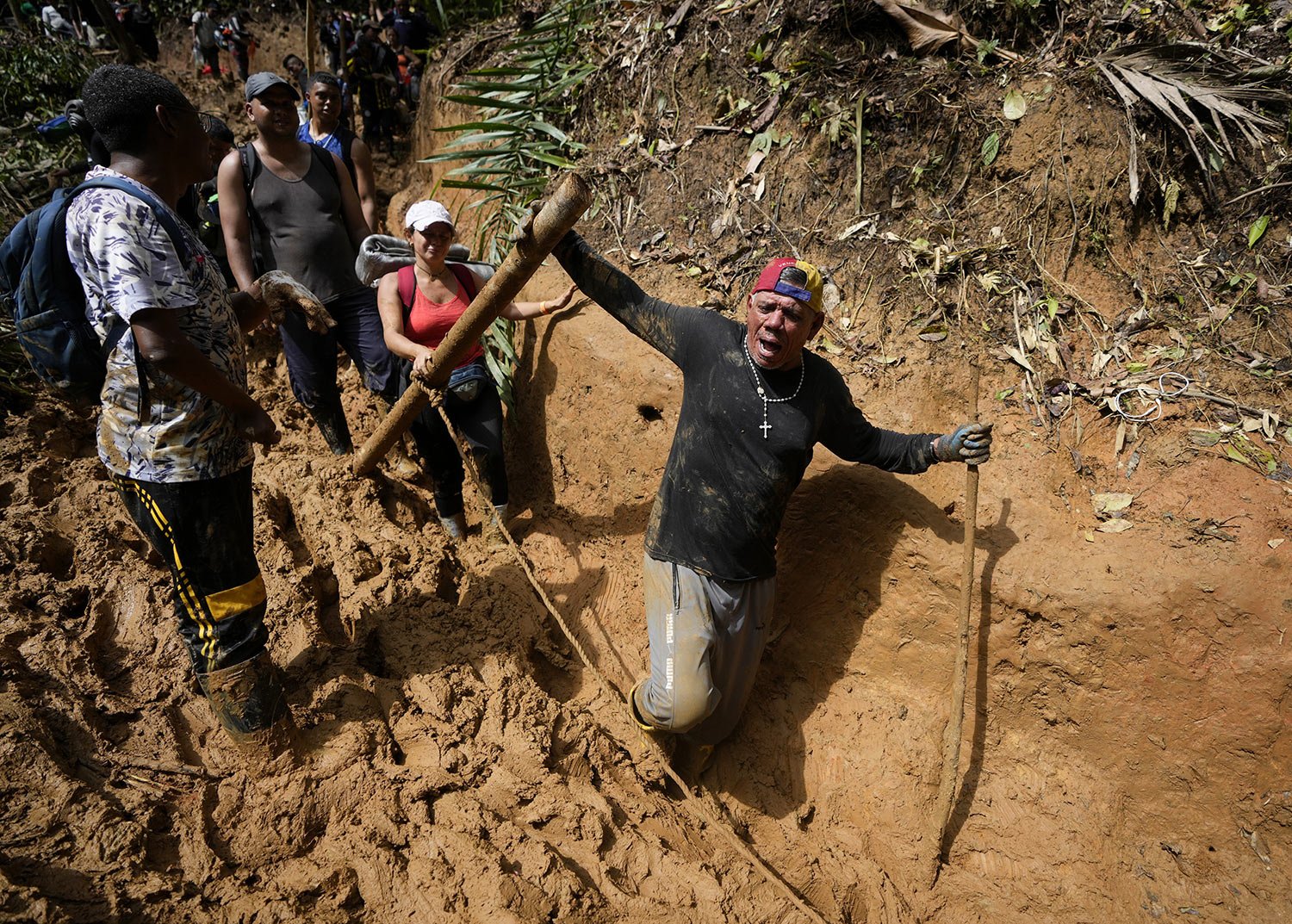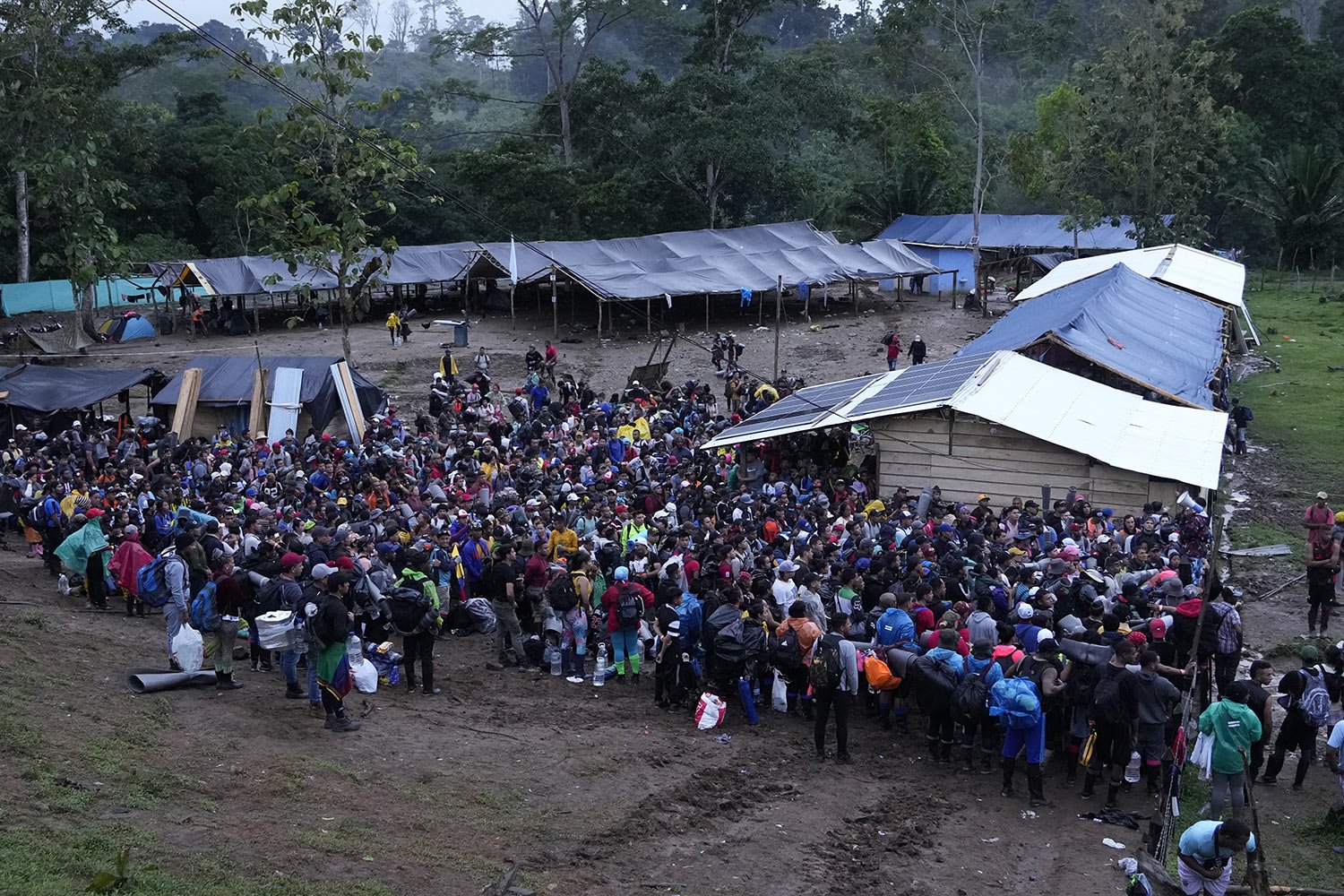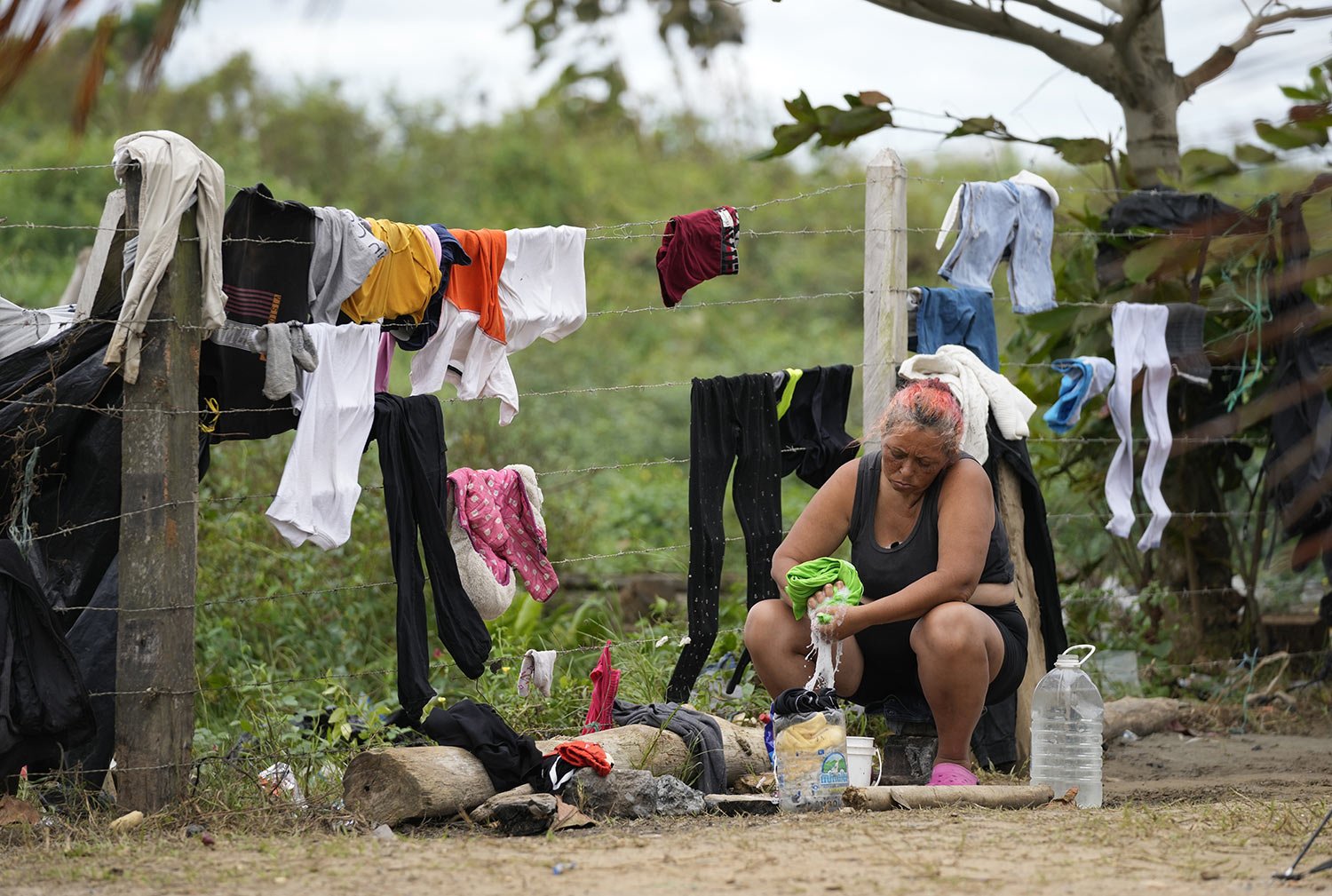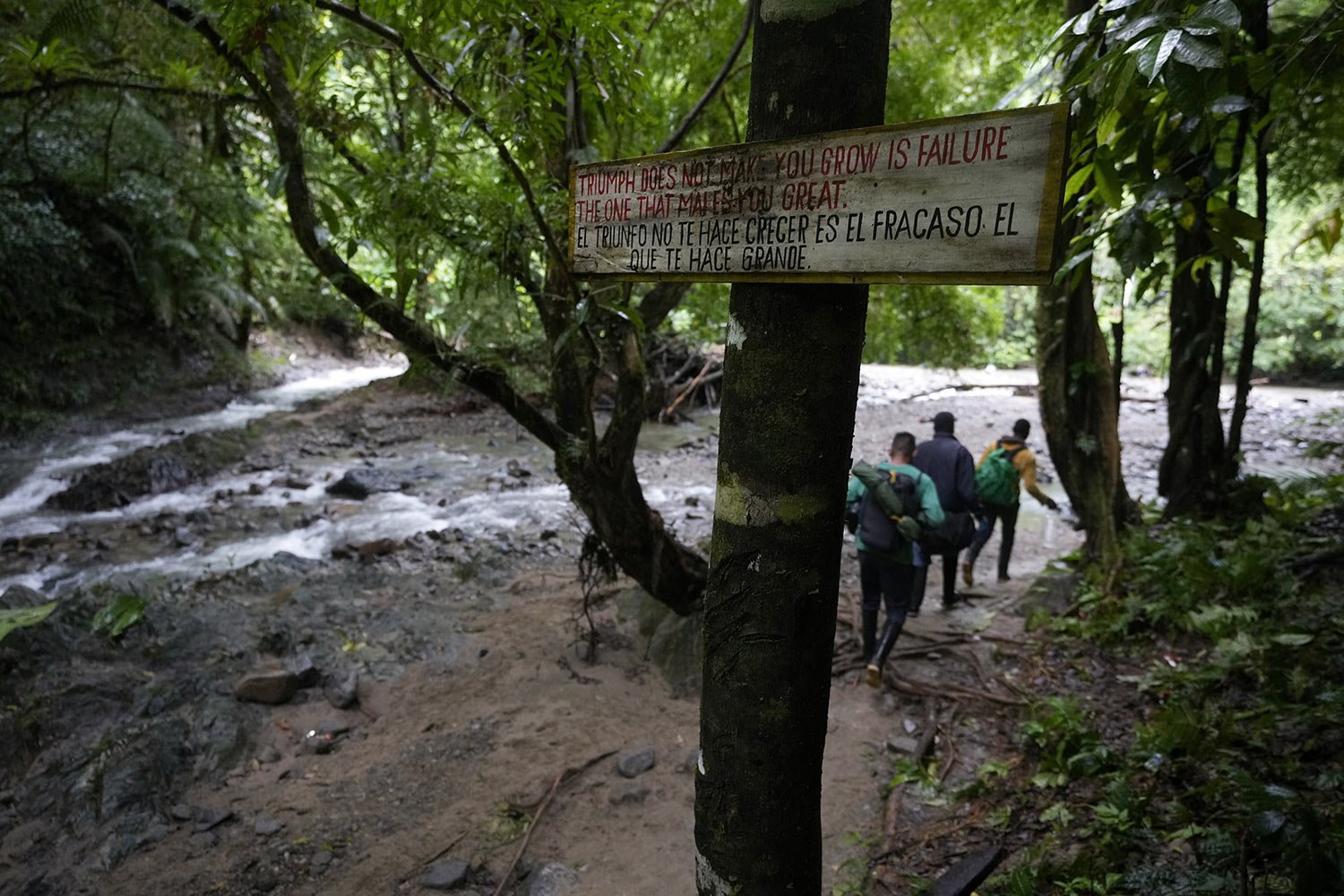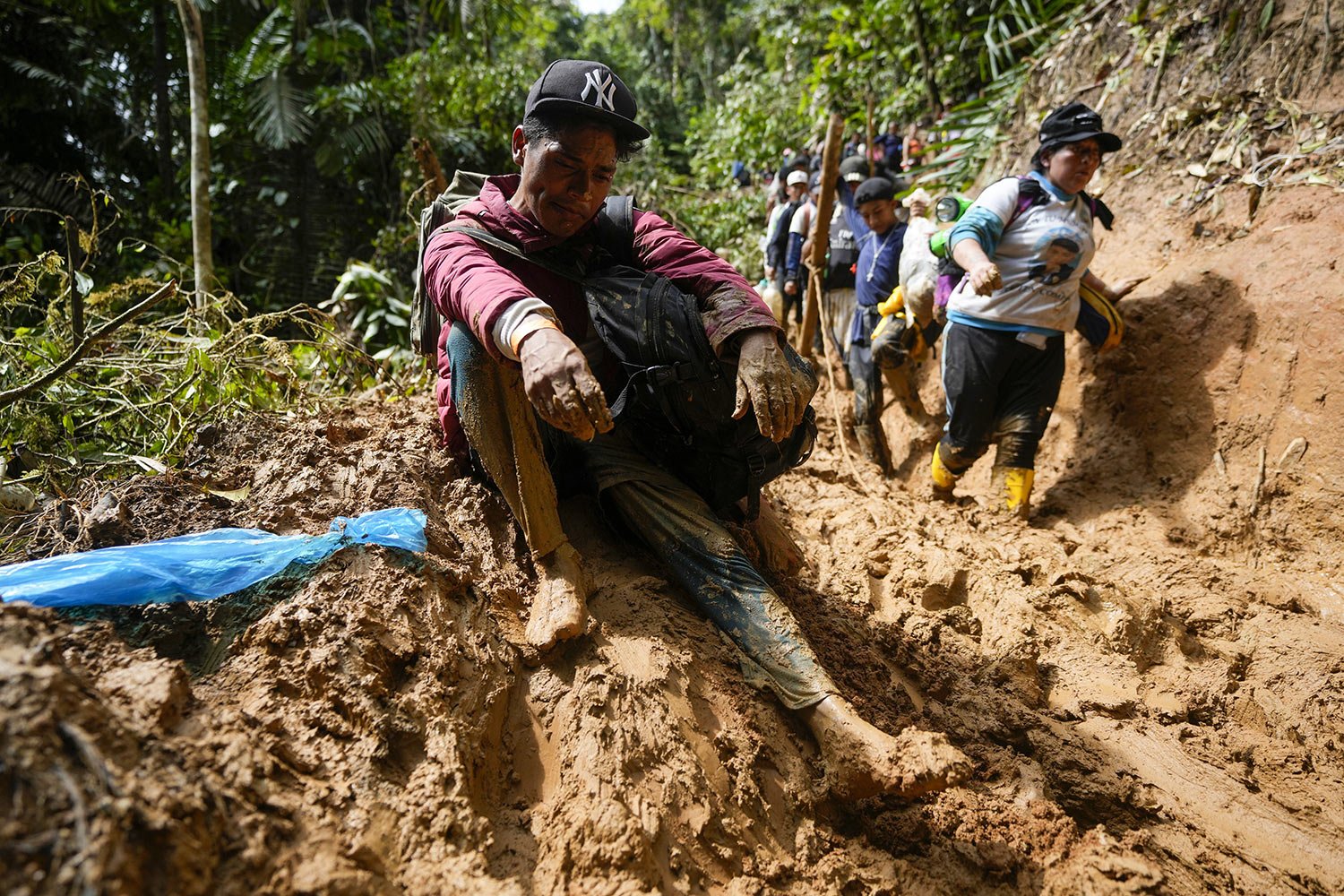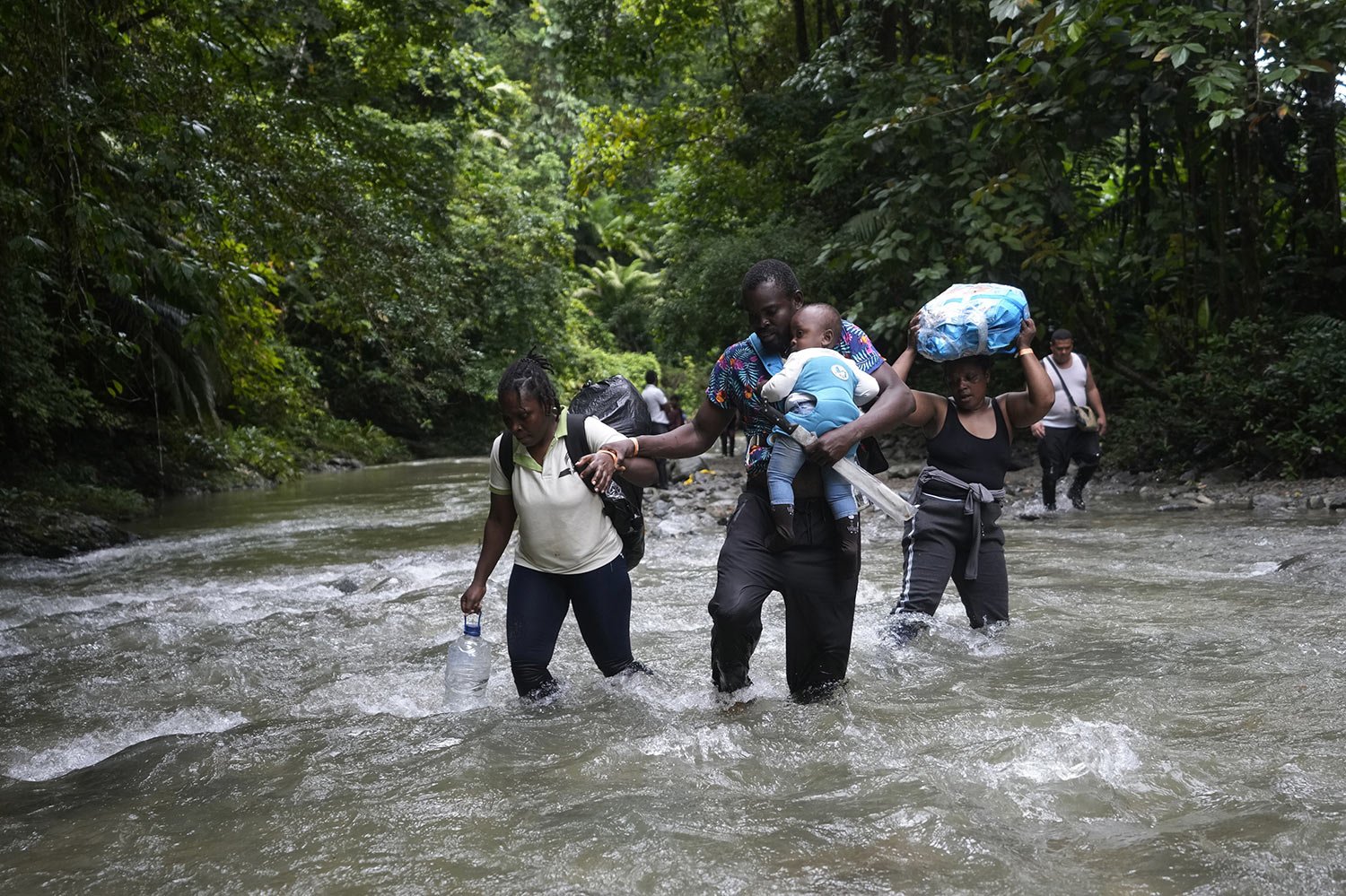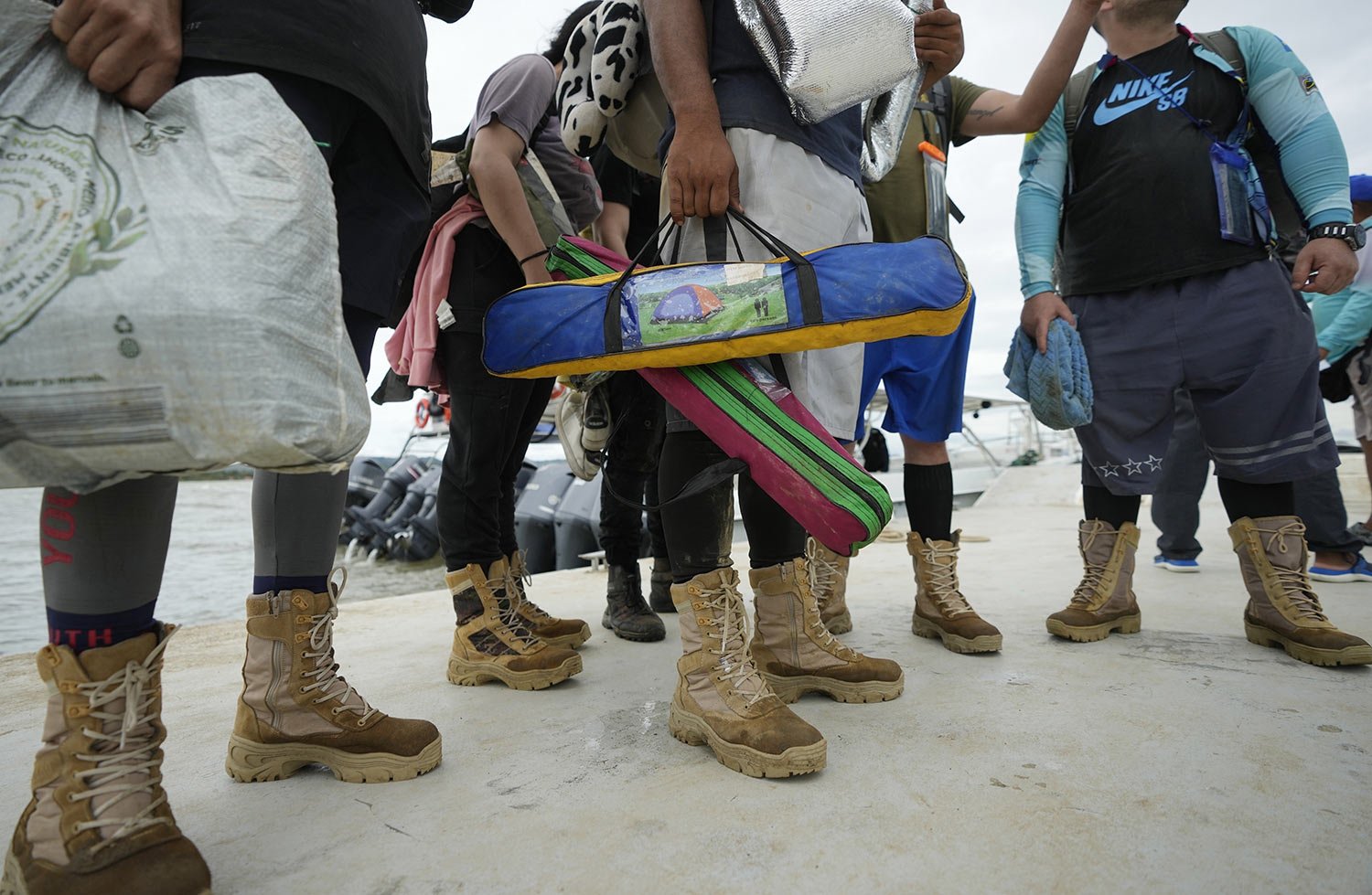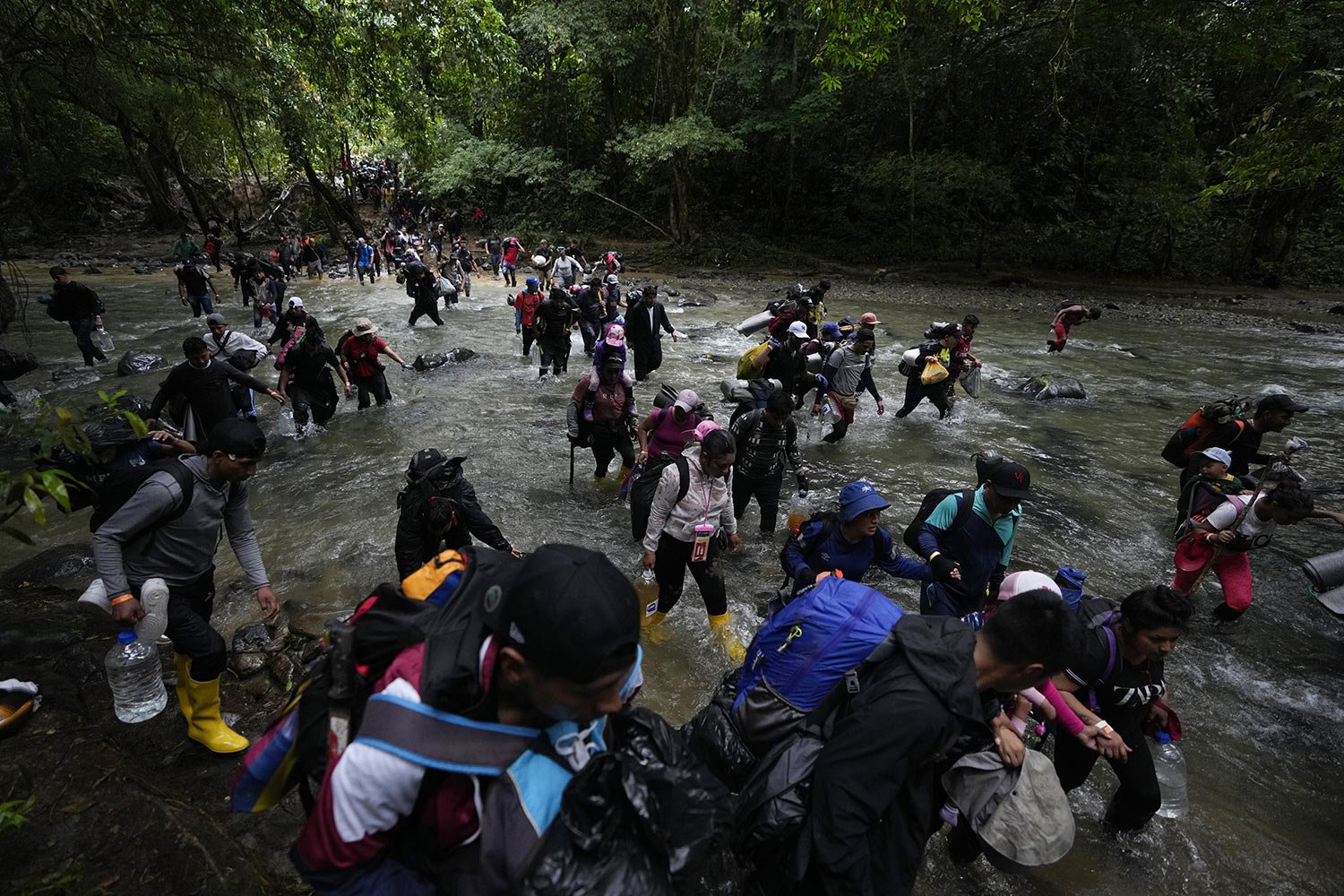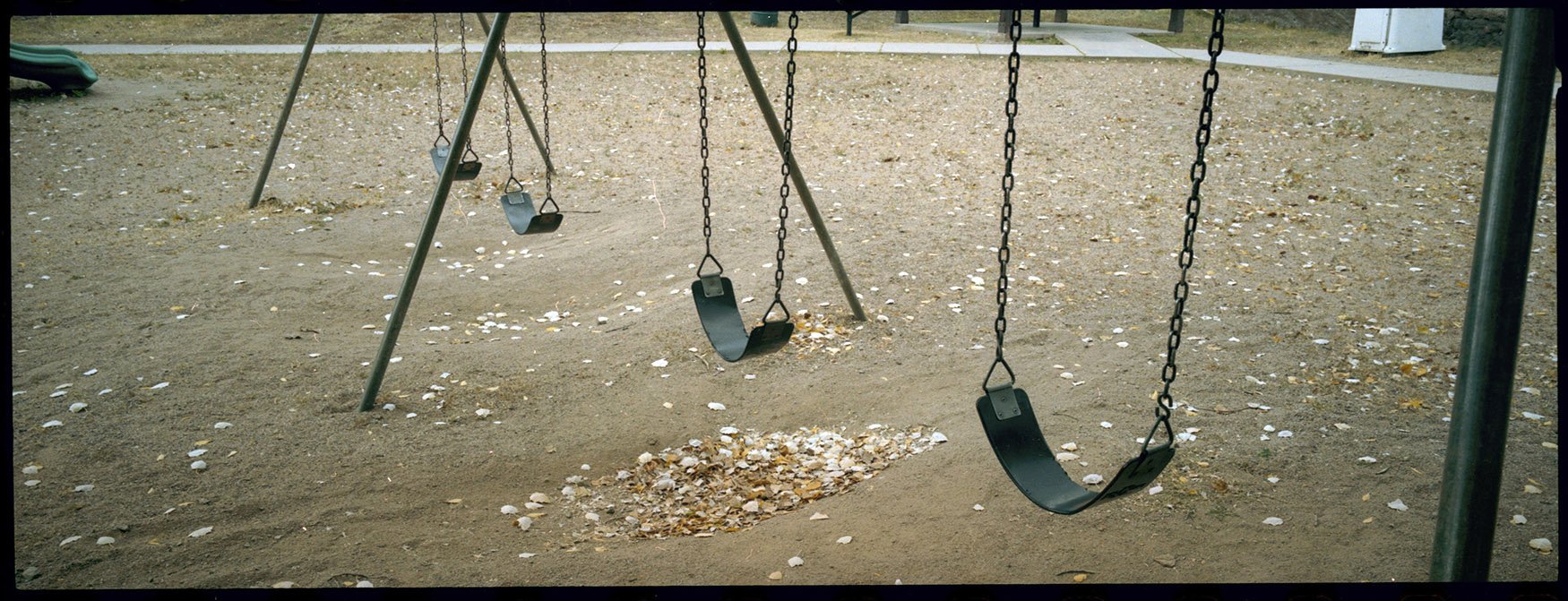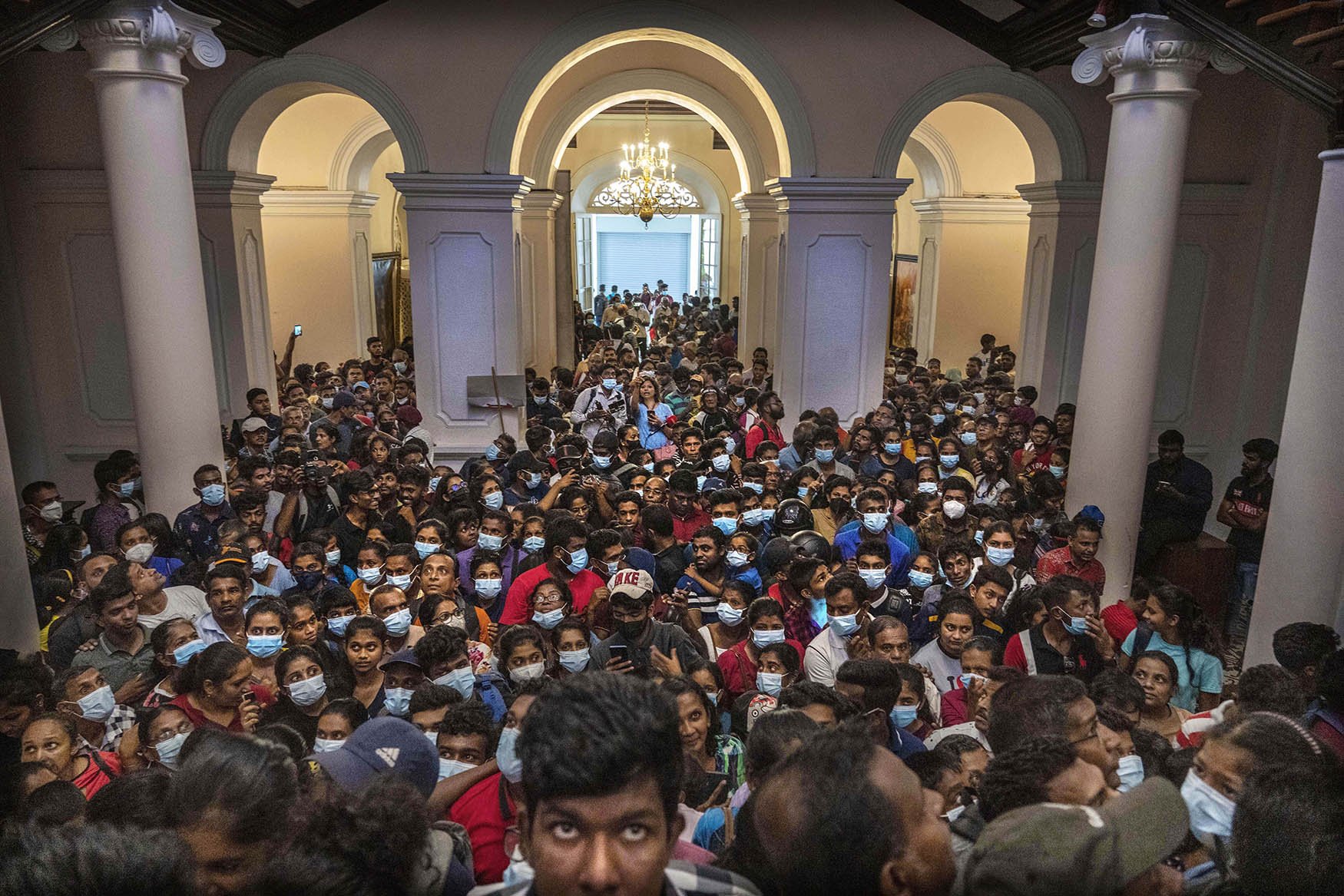Behind the Lens: On migration paths in Latin America

In this series, Associated Press photographers talk about their 2022 assignments, and share some of the stories behind the images.
THE PLACE: Darien Gap, on the border of Colombia and Panama
THE PHOTOGRAPHER: Fernando Vergara
Fernando Vergara, right, poses for a photo with AP video journalist Marko Alvarez, as they stand with a National Police official while covering the destruction of an illegal gold mining operation in Magui Payan, Colombia, April 20, 2021.
“We were really surprised by the number of children.”
ON WHO HE ENCOUNTERED
The first time we were in the Darien Gap, we were covering the migration crisis of Haitians who arrived in Colombia from different countries in South America with hopes of reaching the United States. That time we could only get as far as the point where the area’s smugglers would let us film.
This year, we saw a video on social media of Venezuelans showing hundreds of them starting their trip through the Darien Gap. During our weekly meeting at the Colombia office, we proposed to return and make the crossing through the jungle. We wanted to go much deeper into the jungle than we had with the Haitians.
We were really surprised by the number of children. Some couples had up to three kids, all of them very young. Many even had children who were under 12 months. Most of the adults were the parents who, when they had to cross a river, put them on their shoulders or carried them in their arms, protecting them from the current.
An Haitian migrant carrying a child prepares to start crossing the Darien Gap, from Colombia into Panama, Oct. 15, 2022. (AP Photo/Fernando Vergara)
There are so many memories from that trip. There was a young Venezuelan about 21 years old, with a large build of about 120 kilos (265 lbs.) who told us he wanted to learn photography in the United States. He wanted to get to the U.S. so badly that he walked much faster than his friends, who were thinner. The thing most etched in my mind is that migrants take too many things on the journey and must leave them behind. They throw away jackets, shoes, pants, mats, blankets, etc.
I remember an Ecuadorian family who were going through one of the most complicated sections of the trek and the little girl fell into the mud. Her father was able to hold her arm and told her to get up. The girl could hardly support herself.
This time we walked for 12 hours total, from the time we left Acandi to the Darien Gap and then returning late that night. The journey is very hard physically because you spend a lot of time crossing the river. When you leave the river, you encounter very steep, muddy slopes. The humidity and temperature of the jungle wear you down and trying to protect cameras is another energy taker. Your clothes are wet all day and your supplies get heavier and heavier.
The first time we went with Haitian migrants it was very difficult because when you take a photo of them, they cover their faces. According to their beliefs, photos steal their souls. With the Venezuelan migrants it was easier because they like social media and are willing to appear in photos. About seventy percent of them allowed us to film them. They had a very positive attitude. They wanted to get as fast as possible to Panama, the second country they must pass through. As soon as they had a cell signal, Venezuelan migrants published their own journeys through the Darien.
Migrants, mostly Venezuelans, walk across the Darien Gap from Colombia into Panama, Oct. 15, 2022. (AP Photo/Fernando Vergara)
ON HOW THEY NAVIGATED THE TERRAIN
Through my colleague Marko Alvarez we had a contact at the Acandi municipal press office who connected us with those in charge of passing migrants through the Darien Gap. The area is controlled by members of a highly organized group who call themselves “guides.” They have an extensive area where migrants can camp before starting their trek. There, they charge them in dollars to help them cross the Darien Gap. They charge for everything they offer. If they want them to carry their luggage, that has a price; if they want help carrying their children, that has another price. There are also several resting stations in the jungle where migrants are sold food and drinks but at a super-high price in dollars.
ON WHAT HE LEARNED
I learned a lot from this experience. Like buying hermetic bags to protect all the equipment: cameras, lenses, cards, chargers. I learned that rubber boots are not a good choice for the jungle because they stick in the mud. Leather boots are better. Also, one must stay very well hydrated to resist the area’s severe weather. And no matter how much you protect your equipment, it will get wet and covered with mud. At times they stop working and you must take a break and wait for the cameras to work again. Patience and keeping your walking pace allow you to carry on.
Lead photo: An Ecuadorian man helps his daughter traverse the mud in the Darien Gap, as they walk from Colombia into Panama, Oct. 15, 2022. (AP Photo/Fernando Vergara)


